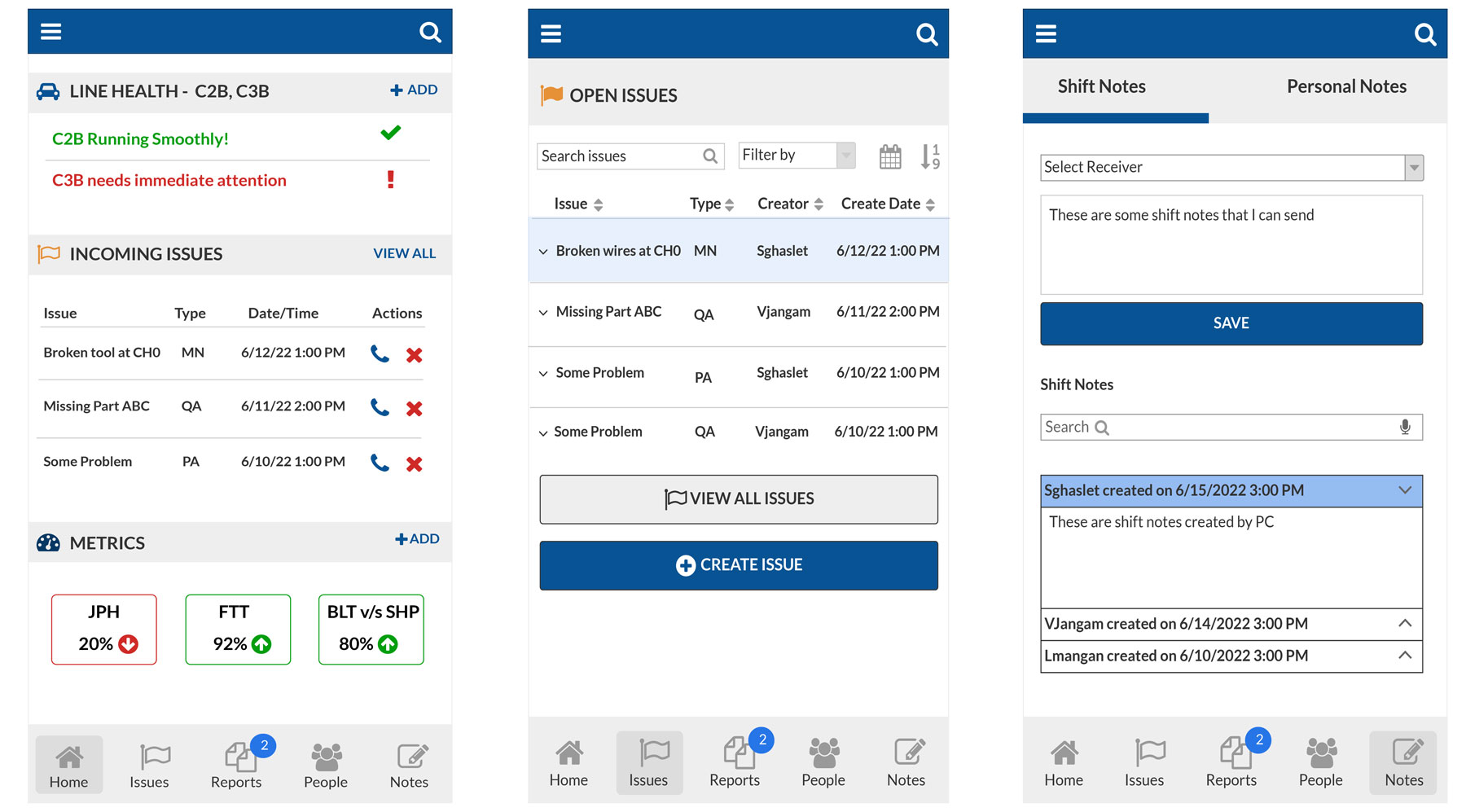Mobile Companion App for Process Coaches
Company & Year: Ford Motor Co. 2022-2023
Intro: Process coaches supervise multiple Team Leaders (more than 100) at Ford production plant. They are the first responder as secondary support. Their job is to verify that the production line is running safely, smoothly, and producing quality parts. Process coaches work rotating shifts and weekends.

Project Overview: Process Coach Mobile Companion (PCMC) is a mobile app designed from ground up that will improve information sharing and help Process Coaches work efficiently during their shifts on the manufacturing plant floor.
My Role: Senior Human Centered UI/UX Designer. Design Thinking, Interaction design, Visual design, Wireframing, Prototyping
Goal: Identify what Process Coaches desire regarding mobile app capabilities, and elevate their work experience at the manufacturing plants by providing straightforward ways to access and communicate information in a timely manner.
Challenges:
- Limited and unpredictable personnel availability
- Training needs
- Manual process workarounds
- Repetitive and changing processes
- Mechanical issues
- Parts availability challenges
- Significant visual and aural noise
- Time consuming paperwork
Qualitative Research: The team visited the Ford DTP and AMC plants in Detroit.
Made observations by watching to understand people’s natural movements, observing their line of sight, and visualizing the complex cognitive and physical challenges as they interact with people and objects.
Conducted in-person interviews with multiple Process Coaches to identify pain points and understand what works well, what is challenging, how they feel when they need to interact with other personnel and objects and how they solve problems.
Discoveries & Insights:
- There is a strong sense of community and camaraderie between people on the plant floor
- Plant workers are proactive, and they get frustrated when issues are not communicated between lines
- People develop workarounds or sub-processes such as using personal phones to text questions
to others - Paperwork is usually delayed in order to focus on keeping the line moving
Design Principles: Design Thinking helped us design products, services, and processes by understanding and focusing on the problems from a customer-focused perspective. This helps us ensure that generated concepts are desirable to the users. After concepts are generated, they will be evaluated for feasibility and viability.
- Connected – The experience we create should seamlessly connect relevant information
- Intuitive – User-friendly and incorporate successful modes of interaction (visual, haptic, aural)
- Simplified – At minimum, reduce complexity and “information noise” (provide only relevant info)
Design Process:
- The team held concept generation sprints with users to learn about the product offerings and how users will respond to it
- I participated in the design sprints and created prototypes for idea validation
- I also designed the app interface and created user experience videos
Results: Designing intuitive interfaces based on user needs is expected to reduce confusion, miscommunication, and the need for many work-around processes. When manual processes are automated, time is saved and productivity is increased. When people are knowledgeable and empowered to solve problems without impediment, their morale may improve.
My experience with this project taught me to have an empathetic mindset as product designer. I’ve learned constant iteration to design an experience can get the users motivated in their workflows.
Leave a Reply